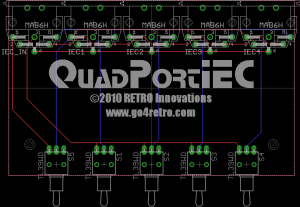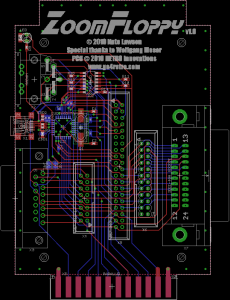
While true innovation might be lacking in this project design, it serves a valuable need. Many months ago, I helped a forum reader with a design for a multi-port IEC hub that allowed individual ports to be “disabled” to disconnecting the ATN line for that IEC port. Months later, Jim Peters, another enthusiast, started conversing with me about a vanilla multi-port IEC hub project he was attempting to design. I brushed off the earlier design, showed Jim the results, and solicited feedback. After revamping the design to fit in a standard Hammond Black 1591XXCSBK or Translucent Blue 1591XXCTBU case, I submitted the design for prototype production this evening. Though I’m happy with my current board manufacturer, there’s not as economical on prototype runs, and I thought I’d try a new company. The finished units should arrive in 2 weeks. I’m only ordering 10 units, but if there is sufficient interest, I’ll consider a production run.
